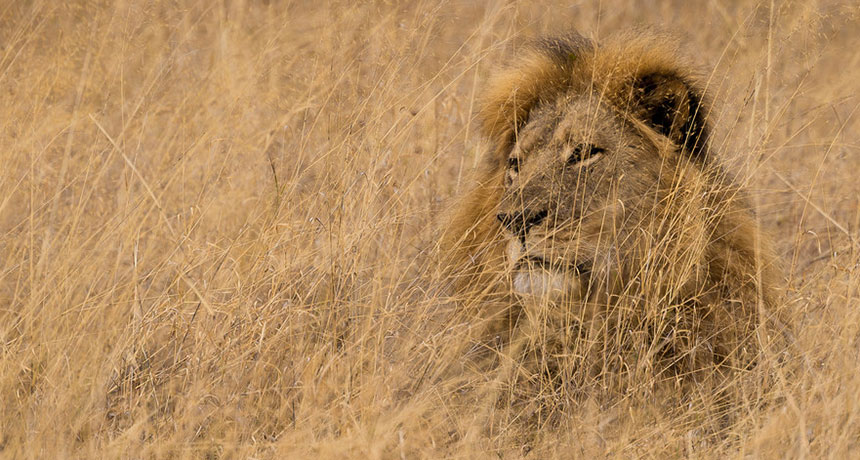Don’t let Cecil the lion distract from the big conservation challenges

Before his death, Cecil the lion was favorite target for camera-wielding tourists in Hwange National Park in Zimbabwe.
Vince O’Sullivan/Flickr (CC-BY-NC 2.0)
- More than 2 years ago
Last week, the death of a lion named Cecil dominated the news and social media. Even before then, Cecil had been somewhat famous, for a lion. He resided in a national park, appeared in pictures and was the subject of scientific research. But his death in early July, at the hand of an American hunter, shot Cecil into the headlines. In the wake of the media frenzy, we are left wondering why one lion garnered so much attention — and what it might mean for the future of conservation.
The world is full of maddening stories of disappearing animals and other organisms, including entire species. Elephant poaching continues at an unprecedented rate. Pesticides and disease are driving declines in bees. Orchids that were once common are now hard to find. A mining company in 2007 quarried away a limestone hill in Malaysia, removing the only habitat for a rare snail and rendering the species extinct in a flash.
Scientists say we are in the midst of a mass extinction, and dozens of species may be disappearing daily — we just don’t notice. So why did Cecil — one of tens of thousands of lions in a vulnerable population — get so much attention?
It probably doesn’t hurt that lions are charismatic. I’ve noted before that ugly animals rarely get the same attention as do the cute ones beloved by toddlers. And this lion had a name. The story had a victim that was easy to love and, perhaps better, an enemy (a bow-and-arrow-wielding dentist) who was easy to hate.
The outrage that Cecil’s killing inspired appears to be resulting in some good: Officials in Zimbabwe have arrested two local men involved in the hunt that killed Cecil and are seeking to extradite the American dentist who killed the lion. The United Nations General Assembly adopted a resolution that would start an effort to combat poaching and wildlife trafficking. Senator Bob Menendez introduced legislation that would, hopefully, discourage Americans from some trophy hunting.
But while hunting and poaching are serious problems for certain species, they aren’t the biggest problems in conservation. The International Union for Conservation of Nature noted earlier this summer that the main threat for 85 percent of all species on the Red List is habitat loss and degradation. Even lions are threatened by habitat loss, scientists noted in their most recent assessment of the species. When an organism has nowhere to live, its future is bound to be bleak. Even if hunting were outlawed today (which could bring a new set of problems, unfortunately), most species that are in trouble now would still be in trouble tomorrow. That includes lions.
So where does that leave us? If people really care about Cecil and his species, then their outrage can’t end, and it can’t be limited to a single dentist or even hunters in general. If humans are to halt the sixth mass extinction, then we need to be looking at what we are doing to the planet, how we are making it an unfriendly place for many species and what we can do to change that — and quickly.
“Millions of people have used [Cecil’s death] as a stimulus to express their enthusiasm for the value of nature,” David Macdonald, director of the Wildlife Conservation Research Unit at the University of Oxford and one of the researchers who studied Cecil, noted last week in Nature. “That’s the sort of enthusiasm that I hope will influence the way that policy is formulated as human enterprise strives to live alongside biodiversity. That would be a suitable memorial for the apparently illegal death of this particular, charismatic and unusually fascinating individual lion.”






